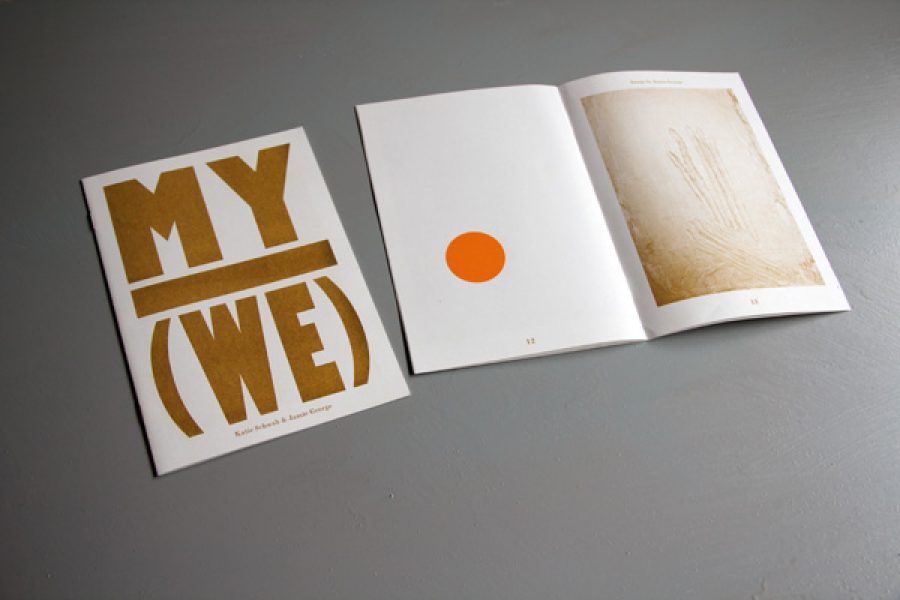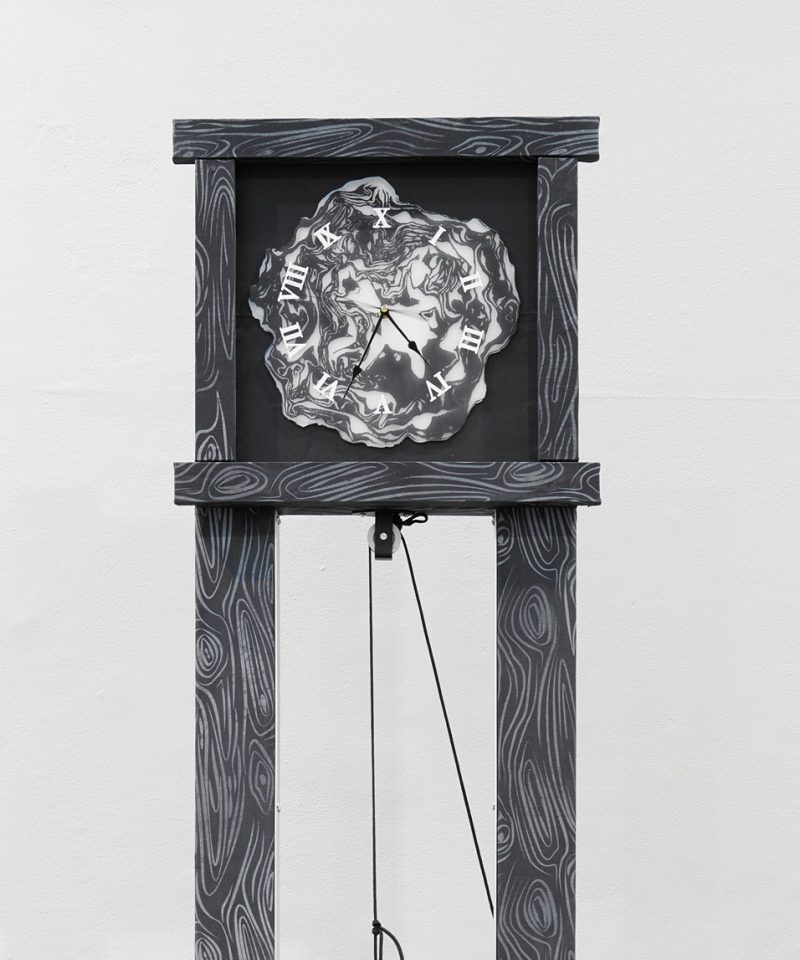I Rupture
Revolution is often conceptualised as a rupture with the past. In an instant as brief as the guillotine’s fall, the link with what came before is severed, like a head cleaved from a body. Since the continuum of history has been cut, the revolution does not constitute a new point on this continuum, but initiates an entirely new time – hence the need for novel systems of measurement, such as decimal time and the French Revolutionary Calendar.
II M. Guillotin and the Maiden
It was never Monsieur Joseph-Ignace Guillotin’s intention to name a killing machine. A doctor who opposed the death penalty and an early supporter of vaccination, M. Guillotin saw the swift death provided by Antoine Louis’s new technology and supposed that if people had to die, this mechanism was the most humane way to do it. So he proposed the idea to the National Assembly in Paris in 1789. Known at the time as the ‘louisette’, after its inventor, Monsieur Guillotin became tied to the machine when he later said to the Assembly: ‘Now, with my machine, I cut off your head in the twinkling of an eye, and you never feel it!’[1] Becoming a popular joke, the name stuck, a fact which M. Guillotin sorely regretted. As Victor Hugo put it: ‘There are some unfortunate men. Christopher Columbus cannot attach his name to his discovery; Guillotin cannot detach his name from his invention.’[2]
The Maiden was a guillotine used in Edinburgh between 1564 and 1716. It is often claimed that James Douglas, the fourth Earl of Morton and Regent of Scotland, introduced the Maiden to Scotland. Like M. Guillotin two-hundred years later, Douglas was interested in a humane method of decapitation. He supposedly saw the Halifax Gibbet, and ‘impressed by its clean work’, decided to commission his own.[3] Although the Maiden was actually commissioned by Edinburgh Council in 1564, the tale was proliferated by many, including Sir Walter Scott.[4]
It is said that after bringing the machine to Scotland, Morton’s instrument was left unused for so long it acquired the name ‘the Maiden’. Feminisation of guillotines was not only a Scottish phenomenon. Both its French names, the ‘guillotine’ and the ‘louisette’, are feminine. Not entirely taking their male namesake’s title, they become female, adding the ‘e’ to the end as though the mechanisms were the daughters of their inventors. The Earl of Argyle, who was the last aristocrat to be beheaded by the Maiden in 1685, declared ‘as he pressed his lips on the block that was the sweetest maiden he had ever kissed.’[5]
III Twice
The decimalisation of time decreed on 5 October 1793 (14 Vendémiaire II in the Revolutionary Calendar) by the National Convention of the French Revolution sought to make time cohere with reason. The decimal timepiece Saint-Just was carrying when he was arrested implied ‘his support for rational innovation and the practical benefits of the application of Enlightenment thought or his rejection of the ancient regime and the hours of the Catholic day’.[6] Decimal time spoke to a republican interest in exactitude, uniformity and efficiency, as well as a desire to encourage modern manufacture – for which the clock was both a symbol and an exemplary commodity. Days were to be divided into ten hours, 1,000 minutes and 100,000 seconds.[7] Not only was this part of a wider standardisation around the number ten as the unit of measurement (the decimalisation of money, the metric system for weights and measures, and perhaps most quixotically, the geometric division of the quarter-circle into 100 rather than 90 degrees), but also the daily irrational repetition of the previous system disappeared: each number from one to ten occurred only once in the course of a day. A stopped clock would no longer be right twice a day.
But the French Revolution would be subject to its own repetition. As Marx famously put it in the opening to The Eighteenth Brumaire of Louis Bonaparte (in fact closely paraphrasing a letter to him from Engels), ‘Hegel observes somewhere that all the great events and characters of world history occur twice, so to speak. He forgot to add: the first time as high tragedy, the second as low farce.’ Caussidière replaced Danton, Louis Blanc replaced Robespierre, Louis Bonaparte replaced Napoleon Bonaparte, as ‘[t]he eighteenth Brumaire of the fool’ staged an elaborate parody of ‘the eighteenth Brumaire of the genius’.[8] Thus, despite its sense of itself in terms of linear historical progress, the French Revolution could not escape this temporal folding and duplication, as the machinations of history produced a repetition in difference fifty years later, an absurd re-performance of the earlier heroic moment.
IV Table (am)
The received historical narrative of the restaurant is that it too was born in the French Revolution, as a consequence of the relaxation of Old Regime guild regulations and the fact that, with aristocrats fleeing the country or gone to the guillotine, their former private chefs took to plying their trade to the public instead. In this account, the restaurant’s origins in the Revolution are exemplary of its participation in the emergence of a bourgeois public sphere in the Habermasian sense, a space acting as a forum for political debate and dialogue, as well as epitomising the ideals of equality (food is a universal need – everyone has to eat) and fraternity (the sans-culotte side-by-side with the bourgeois) immortalised in the Revolution’s most famous slogan.
Food, especially its public consumption, was doubtless a highly politicised arena during the French Revolution. But the reality of restaurants is not quite so simple as the above account. They had emerged around 30 years before, as establishments selling restaurant, a broth said to be light enough for the sickly to consume in lieu of an evening meal, and nutritious enough to restore them to health. In the last twenty years of the Old Regime, ‘restaurants’ distinguished themselves not only by serving this reputedly life-giving consommé, but by their individual tables, the availability of food at any time they were open, and the menu as a range of options from which the customer could choose rather than a schedule of food to be served irrespective of a diner’s preferences. (As for the story that the Revolution released onto the market an abundance of former private chefs armed only with their culinary labour power and enough capital to start a small business, it should be noted that many such chefs had actually set up shop as restauranteurs (or restaurateurs) before the Revolution; to have such aristocratic associations in one’s past, moreover, might well be a liability for one’s business – and life – in the Jacobin era.)
The restaurant was distant from the sharing, communalism and straightforward unpretentious food associated with the Revolution’s ‘fraternal banquets’. It was identified with an elite clientele of aristocratic or quasi-aristocratic distinction; with culinary extravagance; with weak constitutions born of aristocratic degeneracy that necessitated the consumption of restorative broth. The restaurant’s connotations, Rebecca L. Spang notes, were of ‘idiosyncrasy and preference’, of ‘distinction and restoration’, of ‘social and cultural differentiation’, in sharp contrast to the ‘solidarity and uniformity’, the ‘equality and sustenance’, the ‘table-based sociability’ that formed the ideal of the fraternal banquets.[9] Restaurants offered personal service rather than the secular agape feast of the fraternal banquet. For similar reasons, the café serves as a better example of the emergence of the bourgeois public sphere than the restaurant: the latter was typified not merely by individual tables but often by the option of private rooms, less a public sphere than a ‘publicly private space’.[10]
Despite the fact that a martyr of the French Revolution, Louis-Michel Le Peletier, was dining in a restaurant when he was assassinated, the overall atmosphere of the restaurant in this period is counter-revolutionary. It seems suited instead to the society that emerged after the Revolutionary period. The restaurant diner is an ideal bourgeois subject: an individualistic figure, exercising choice and entering the marketplace as a consumer whenever it takes their fancy – as long as they can pay.
V Digits
A one followed by a zero could have been any number. Computers run on binary systems, base two, but when we count we use base ten. This is probably an oversight. Imagine for a moment that we used the duodecimal (counting to base twelve) rather than decimal system (base ten). Many other social conventions are already based on twelve. A dozen eggs, a carpenter’s rule with twelve subdivisions, the number of months in a year following the cycle of the moon. Even language is against ten: twelve is the largest number with a single syllable in the English language. Most importantly, twelve is a highly composite number divisible by two, three, four and six, while ten is only divisible by two factors: two and five. Twelve is much more useful for calculations and computation. In 1962 the mathematician A.C. Aitken proposed:
‘The duodecimal tables are easy to master, easier than the decimal ones; and in elementary teaching they would be so much more interesting, since young children would find more fascinating things to do with twelve rods or blocks than with ten. Anyone having these tables at command will do these calculations more than one-and-a-half times as fast in the duodecimal scale as in the decimal’.[11]
Not only would it make maths easier, but it might also help keep children’s fingers busy and out of trouble. In keeping youthful fingers on the straight and narrow, the duodecimal system was like the finger pillory: a historic form of punishment for minor offences that was less extreme than the normal stocks, let alone the guillotine. It consisted of two hinged pieces of wood with ten divots clamping the extremities of those who didn’t attend church or committed other misdemeanours. (An example survives in St Helen’s Church in Leicestershire.) For the punishment of Victorian children who couldn’t keep their hands still, the finger pillory took a different form: two pieces of wood attached with a ribbon and with a hole for each finger.
Fingers are trouble in our number system as well as in the classroom, as they form the basis for counting to base ten. There is a handiness to this when it comes to more rudimentary calculations, but as extraordinary as our fingers are for peeling undesirable skins from vegetables, scrabbling in the dirt, and pushing warm food into our mouths, these fleshy appendages are a million miles away from the high-minded reasoning required when constructing advanced mathematical systems.
Attempting to ally temporal measurement with abstract reason by introducing decimal time, the National Convention unconsciously secured a deeper, and rather unhelpful, anthropomorphism. (This is also signalled by digital timepieces: even as they escape the anthropomorphism of the ‘faces’ and ‘hands’ of older clocks and watches, their name reaffirms the number system’s foundation in human anatomy.) The complex calculations proposed by French Revolutionary time would actually have been easier if instead they had switched to a duodecimal system, since dividing a circle using base twelve is as easy as π. All that was necessary was to divide the clock face up into 144 sections and add two extra numbers; some say T and E (ten and eleven), others ᄅ and Ɛ (upside down 2 and 3). It would also make telling the time fractional. Rather than ‘five past twelve’ you would say ‘five and a twelfth’. If only the Revolutionaries had realised they didn’t need to change time, but the counting system.
If only we’d had twelve fingers.
VI Table (pm)
The primary point of contrast in French dining for the emergent restaurant in the second half of the eighteenth century was the inn’s table d’hôte, the ‘host’s table’. As Spang describes, ‘[a] meal set at one large table, always at the same specified time, and at which the eaters had little opportunity to order or request particular dishes, the table d’hôte was frequently a regular midday meeting spot for local artisans and workers, old friends and long-time residents of a neighbourhood’. Here, ‘each patron paid a set amount – dining “by head,” it mattered not if he had been the first and the hungriest to set upon the roast, or the last arrived at table, obliged to make do with the remaining side dishes. In contrast, the restaurant picnicker in the eighteenth century ate alone, not sharing, not participating in hospitable give and take, but paying his own way.’[12]
The restaurant, then, indicates the increasing abstraction of time under capitalism and modernity described by E.P. Thompson,[13] and a growing displacement of community by anonymity. The single midday sitting of the table d’hôte still evokes a pre-industrial society, a sense of time structured according to regular daily rhythms, with its seasonally-variable periods of light and dark and the various tasks that require carrying out at certain hours. In contrast, descriptions of early restaurants frequently drew attention to their opening round the clock, and because they were not characterised by the camaraderie of regular table-mates like the table d’hôte, were more suited to the stranger passing through.[14] Food on demand, for an anonymous clientele.
VII S/pikes
The cabbage and turnip were traditionally used in Halloween celebrations on the Isle of Man.[15] Mounted on spikes, they were stand-ins for decapitated heads, grotesquely parodying a mouthful of vegetable on a fork. Singing and banging on neighbourhood doors, revellers carrying them were only silenced with a gift of a scone or a potato. The symbol of a head impaled on a pike after decapitation was one to drive fear into the hearts of citizens and subjects, peasants, workers and aristocrats, revolutionaries and counter-revolutionaries – a form of threat and control. There are many examples of heads on pikes being paraded through the streets during the French Revolution. One of the most horrific was the execution of Princesse de Lambelle, a close friend of Marie Antoinette. The story of what happened to her body varies, as they do for her head. After her decapitation her head was paraded through the streets. Some say it was brought to a restaurant where guests were asked to drink to her death, whilst others suggest that it was brought to the Queen to kiss her supposed lover goodbye.
One does not need a head on a spike to revolt, of course. One of the lasting images of the French Revolution is Liberty Leading the People by Eugène Delacroix. Clambering over the dead Marianne, the goddess of liberty, thrusts the French flag into the air and the army she leads do the same with guns, pikes and flags alike. If the tip of a clock’s hand points at a number, the pike of rebellion points to change.
VIII Tick Tock
The sound of a clock ticking is surprisingly universal. In forty-one languages the onomatopoeia is some variant of tick tock: tic tac, clit caqq, tikk takk etc.[16] This sound, of course, can describe a sense of being hurried, a reminder to speed up your work, induce anxiety or even create a sense of foreboding. When Newton takes a watch from an old man who has had a heart attack in Chronopolis, a short story by J.G. Ballard, he fears, as time pieces are forbidden, that the Time Police will track him down. Even muffled by his clothing the watch’s ‘tick was as loud as a death-knell.’[17]
Newton’s predicament condenses two aspects of time: time’s embroiling in discipline and time in the metaphysics of mortality. Time is one of the central terrains for the struggle between worker and capitalist or manager: the battle over the length of the working day, for instance, and over how much work is carried out per hour. Even outside the formalised workplace, the ticking clock is a constant reminder of the imperative to be productive, to not waste time. It becomes internalised. One can be wrung through time at work (like Charlie Chaplin in Modern Times) or literally hang onto it for dear life in the stress of the modern city (like Harold Lloyd in Safety Last). Meanwhile, the clock reminds us that time is always running out for mortals. The clicking of the death-watch beetle, similar to the sound of a ticking clock, is an ill omen of death’s approach. In Edgar Allan Poe’s The Tell-Tale Heart, the ever-increasing noise of the victim’s heart under the floorboards that incites the narrator to frenzied confession is ‘a low, dull, quick sound – much such a sound as a watch makes when enveloped in cotton’.[18] Tick tock as signifier of both panic and murder.
The sound of an object can be deceptive. In Foley art the sound of a ticking bomb is a harmless clock off-screen, whilst the ring of a 1930s telephone is replicated by a clock’s alarm. To make bodily noises the Foley artists are imaginative in their creation of sound: gelatine and hand soap make squishing noises, celery snapping creates the sound of broken bones while frozen romaine lettuce is the convincing noise of head injuries. (This trompe l’oreille is dramatised in Peter Strickland’s 2012 horror film Berberian Sound Studio, in which melons are recorded being chopped for the soundtrack of a giallo.) A guillotine is relatively easy to make the sounds for, says Robert L. Mott, audio theatre expert. All you need is a pipe and a sharp piece of metal to run down it, landing on a canvas bag filled with pebbles. If the audience should need a visual, a paper cutter can be used, with a melon, hollowed out and filled with potato chips, creating a convincing decapitation.[19] The other method is to hack a cabbage in half in a single blow and roll the section into a basket making a satisfying thud, unconsciously going full circle, back to Hegel’s suggestion that the guillotine offers ‘the coldest and meanest of all deaths, with no more significance than cutting off a head of cabbage’.[20]
IX Revolution
Danièle Huillet and Jean-Marie Straub’s 1981 film Too Early / Too Late, a meditation on, among other things, the complex, uneven, non-synchronous temporalities of revolutions, begins with a five-and-a-half-minute shot taken from a vehicle repeatedly circling a roundabout. The noun ‘revolution’ in its political sense, as Raymond Williams notes, derives from the Latin revolvere, to revolve, and its original usage in English referred to this physical, circular motion, like the hands on a clock. From there, in part through association with the ‘Wheel of Fortune’, its meaning became transformed into that of an immense social and political movement: the world turned upside down.[21] In contrast to the inauguration of a radically new period through rupture, then, the etymology of ‘revolution’ suggests implications of return and reconfiguration. A passing back through the same points, in a new way.
X Loops
Although M. Guillotin could never separate his name from the Guillotine, he didn’t suffer at it. Guillotin was imprisoned during the French Revolution for aiding escaping friends. After the fall of Robespierre, Guillotin returned to his work as a doctor. James Douglas was not so lucky. On 2 June 1581, the Earl of Morton was put to death for conspiracy in the murder of Lord Darnley, King Consort of Scots. Although the evidence against him was scant, the Maiden, in the end, took the head of her apocryphal creator.
[1] William Chambers and Robert Chambers, ‘Dr Guillotin’, Chambers’s Edinburgh Journal, 1:1-26 (January–June 1844), p. 219
[2] Victor Hugo quoted in Jacques Derrida, The Death Penalty, ed. Geoffrey Bennington, Marc Crépon, and Thomas Dutoit, trans. Peggy Kamuf, (Chicago and London: University of Chicago Press, 2013), p. 194
[3] Sir Herbert Eustace Maxwell, History of the House of Douglas, Vol. 1 (London: Freemantle & Co., 1902), pp. 283-5
[4] The tale was promoted amongst others David Hume of Godscroft, The History of the Houses of Douglas and Angus, (Edinburgh: Evan Tyler, 1644), and Sir Walter Scott, Tales of a Grandfather, (London: Whittaker and Co, 1836), p. 164
[5] John Wilson Crocker, quoted in Regina Janes, Losing Our Heads: Beheadings in Literature and Culture (New York and London: NYU Press, 2005), p. 83
[6] Matthew Shaw, Time and the French Revolution: The Republican Calendar, 1789-Year XIV (Woodbridge and Rochester: Royal Historical Society/Boydell Press, 2011), p. 122
[7] Shaw, Time and the French Revolution, pp. 139, 124 and 123
[8] Karl Marx, The Eighteenth Brumaire of Louis Bonaparte, in Later Political Writings, ed. and trans. Terrell Carver (Cambridge: Cambridge University Press, 1996), p. 31
[9] Rebecca L. Spang, The Invention of the Restaurant: Paris and Modern Gastronomic Culture (Cambridge, MA and London: Harvard University Press, 2000). The historical account throughout this section is drawn from this book
[10] Spang, Invention of the Restaurant, p. 86
[11]A. C. Aitken, ‘Tens and Twelves’, The Listener (25 January 1962), http://www.dozenalsociety.org.uk/archives/aitken.html
[12] Spang, Invention of the Restaurant, pp. 8 and 61
[13] E.P. Thompson, ‘Time, Work-Discipline and Industrial Capitalism’, Past and Present 38 (December, 1967)
[14] Spang, Invention of the Restaurant, pp. 8 and 67
[15] Jane Grigson, Jane Grigson’s Vegetable Book (London: Penguin, 1980), p. 126
[16] The sound of a clock ticking in French, Nepali and Estonian. https://en.wikipedia.org/wiki/Cross-linguistic_onomatopoeias#Clock_ticking
[17] J.G. Ballard, ‘Chronopolis’, The Complete Short Stories: Volume 1 (London: Harper Perrenial, 2006), p. 208
[18] Edgar Allan Poe, ‘The Tell-Tale Heart’, Selected Tales (Oxford and New York: Oxford University Press, 1998), p. 196
[19] Robert L. Mott, The Audio Theater Guide: Vocal Acting, Writing, Sound Effects and Directing for a Listening Audience (London: McFarland and Company Inc., 2009), p. 165
[20] G. W. F. Hegel, Phenomenology of Spirit, trans. A. V. Miller (Oxford and New York: Oxford University Press, 1977), p. 360
[21] Raymond Williams, Keywords: A Vocabulary of Culture and Society (London: Fontana, 1976), pp. 270-271



